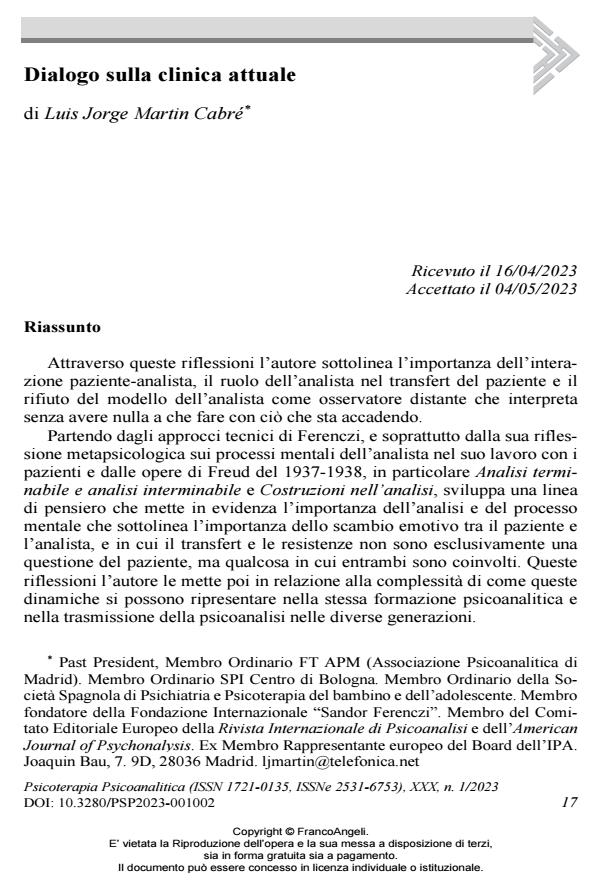Dialogue on the current clinic
Journal title PSICOTERAPIA PSICOANALITICA
Author/s Luis Jorge Martin Cabré
Publishing Year 2023 Issue 2023/1
Language Italian Pages 15 P. 17-31 File size 200 KB
DOI 10.3280/PSP2023-001002
DOI is like a bar code for intellectual property: to have more infomation
click here
Below, you can see the article first page
If you want to buy this article in PDF format, you can do it, following the instructions to buy download credits

FrancoAngeli is member of Publishers International Linking Association, Inc (PILA), a not-for-profit association which run the CrossRef service enabling links to and from online scholarly content.
Through these reflections the author underlines the importance of the patient-analyst interaction, the role of the analyst in the patient’s transference and the rejection of the model of the analyst as a distant observer who interprets having nothing to do with what is happening. Starting from Ferenczi’s technical approaches, and above all from his metapsychological reflection on the analyst’s mental processes in his work with patients and from Freud’s of 1937-1938, in particular "Analysis terminable and analysis interminable and "Constructions in, develops a line of thought which highlights the importance of analy-sis and the mental process which underlines the importance of the emotional exchange between the patient and the analyst, and in which transference and resistances are not exclusively a matter of the patient, but something in which both are involved. The author then puts these reflections in relation to the complexity of how these dynamics can re-cur in the same psychoanalytic training and on the transmission of psychoanalysis in the different generations.
Keywords: historical truth, psychic truth, psychoanalytic transmission, intropression, trauma.
Luis Jorge Martin Cabré, Dialogo sulla clinica attuale in "PSICOTERAPIA PSICOANALITICA" 1/2023, pp 17-31, DOI: 10.3280/PSP2023-001002